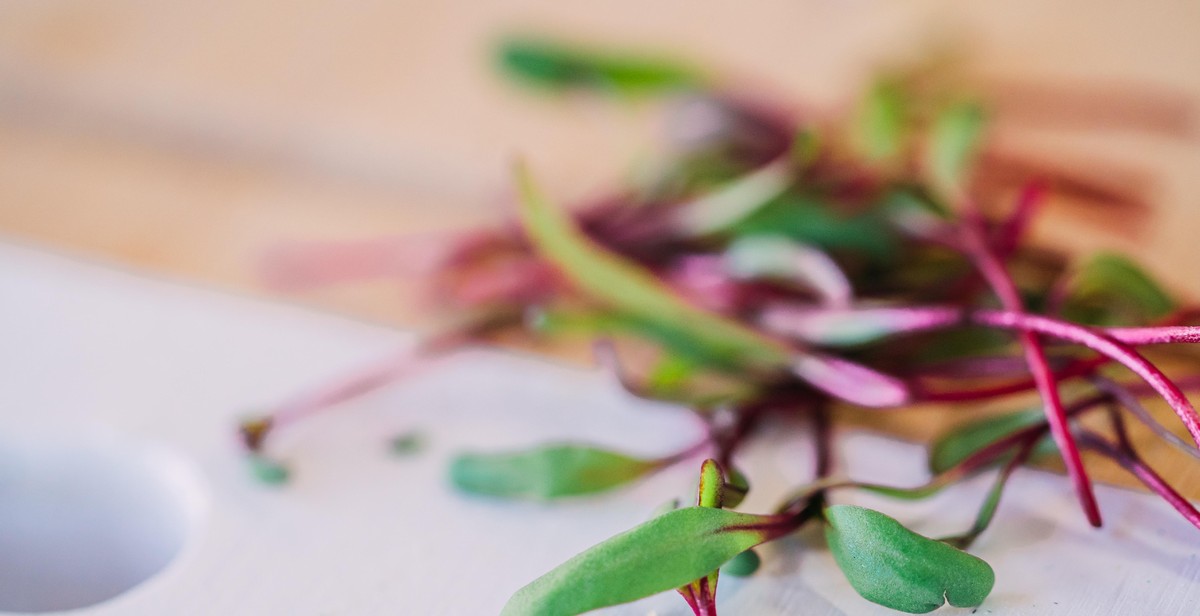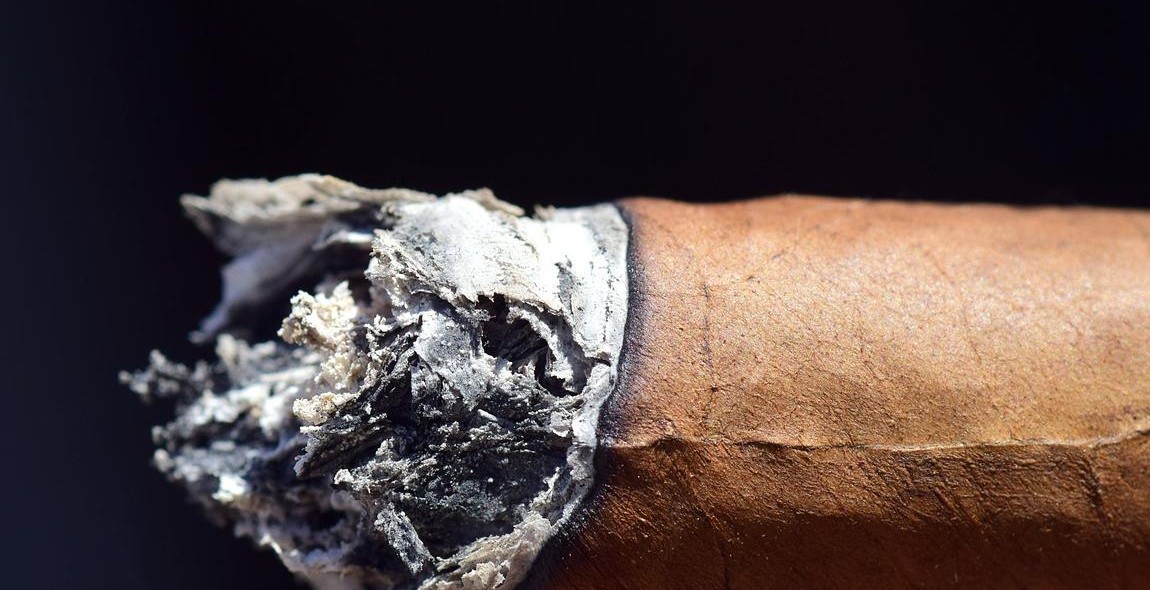How to Grow Your Own Tobacco Plant: A Guide to Cultivating Cigarette Ingredients
As a professional writer and content creator, I have had the opportunity to explore various topics, and one that stands out is tobacco cultivation. Growing your own tobacco plant is not only a fulfilling experience but also a way to ensure that you have the best quality tobacco for your cigarettes.
However, growing tobacco requires some level of expertise, and as a seasoned tobacco cultivator, I have put together this comprehensive guide to help you grow your own tobacco plant.
The Benefits of Growing Your Own Tobacco
- You have control over the quality of tobacco you use for your cigarettes
- You save money by growing your own tobacco instead of buying cigarettes
- It is a fun and fulfilling hobby
What You Will Learn
In this guide, you will learn:
- The basics of tobacco cultivation
- The tools and equipment you need to grow tobacco
- The different types of tobacco plants and which one is best for you
- The ideal planting conditions and how to prepare the soil
- How to care for your tobacco plant
- When and how to harvest your tobacco plant
- How to cure and store your tobacco leaves
By the end of this guide, you will have all the information you need to grow your own tobacco plant and enjoy the satisfaction of smoking your own homemade cigarettes. Let’s get started!

Why Grow Your Own Tobacco?
As a seasoned smoker, I have always been curious about the process of growing tobacco. After conducting thorough research and experimenting with my own tobacco plants, I have come to the conclusion that growing your own tobacco is not only a rewarding experience, but it also comes with several benefits that cannot be overlooked.
Cost Savings
One of the most significant advantages of growing your own tobacco is the amount of money you can save. Purchasing cigarettes or tobacco products from stores can be quite expensive, especially if you are a frequent smoker. By growing your own tobacco, you can significantly reduce your expenses and enjoy your cigarettes without breaking the bank.
Quality Control
Another benefit of growing your own tobacco is the level of quality control you have over your product. When you purchase cigarettes or tobacco products from stores, you have no idea where the tobacco came from or what additives were used during the manufacturing process. By growing your own tobacco, you can ensure that your product is free of harmful additives and chemicals, and you have complete control over the quality of your tobacco.
Sustainability
Finally, growing your own tobacco is a sustainable practice that promotes self-sufficiency. By cultivating your own tobacco plants, you are reducing your dependence on large corporations and contributing to a more sustainable environment. Additionally, growing tobacco is a relatively easy process that can be done in your backyard or on your balcony, making it accessible to anyone who is interested in trying it out.
In conclusion,
Growing your own tobacco is a cost-effective, quality-controlled, and sustainable practice that can provide you with a rewarding experience and a sense of self-sufficiency. Whether you are a seasoned smoker or just curious about the process, growing your own tobacco is worth considering.
Choosing the Right Tobacco Seeds
When it comes to growing your own tobacco plant, the first and most crucial step is choosing the right tobacco seeds. There are various types of tobacco seeds available in the market, each with its unique flavor, aroma, and nicotine content. The type of tobacco seeds you choose will determine the quality and taste of your final product. Here are some factors to consider when choosing tobacco seeds:
1. Nicotine Content
The nicotine content of tobacco seeds varies from one type to another. If you prefer a strong and potent cigarette, you should opt for tobacco seeds with a high nicotine content. On the other hand, if you prefer a milder cigarette, go for tobacco seeds with a lower nicotine content. It’s essential to note that high nicotine content can be harmful to your health, so always use it in moderation.
2. Flavor and Aroma
The flavor and aroma of tobacco seeds are also crucial factors to consider. Different tobacco seeds have distinct flavors and aromas, ranging from sweet and fruity to earthy and nutty. It’s essential to select tobacco seeds that match your taste preferences. You can also experiment with different types of tobacco seeds to find the perfect match for your taste buds.
3. Yield and Growth Time
The yield and growth time of tobacco seeds are also important factors to consider. Some tobacco seeds yield more than others, while some take longer to mature. If you’re growing tobacco for personal use, you may not mind waiting longer for your crop to mature. However, if you’re growing tobacco for commercial purposes, you should select tobacco seeds that have a shorter growth time and higher yield.
4. Disease Resistance
Finally, you should also consider the disease resistance of tobacco seeds. Some tobacco seeds are more resistant to diseases and pests than others, which can save you a lot of time and money in the long run. Always select tobacco seeds that are known for their disease resistance to ensure a healthy and robust crop.
By considering these factors, you can choose the right tobacco seeds that will suit your needs and preferences. Remember to purchase your tobacco seeds from a reputable supplier to ensure quality and authenticity.
Preparing the Soil
Before starting your tobacco plant cultivation, it is essential to prepare the soil properly. The quality of the soil can affect the growth and quality of the tobacco plant, so it is crucial to choose the right soil type, fertilization, and pH level.
Soil Type
The tobacco plant grows best in well-draining soils that are rich in organic matter. Sandy loam soil with a pH range of 6.0 to 6.5 is ideal for tobacco cultivation. It is important to ensure that the soil is free from rocks, roots, and other debris that can impede the growth of the tobacco plant.
Fertilization
Tobacco plants require a significant amount of nutrients to grow and produce a high-quality yield. Before planting, it is recommended to add organic matter such as compost, manure, or leaf mold to the soil. This will provide the necessary nutrients and improve the soil structure. Additionally, it is recommended to add a balanced fertilizer with a ratio of 10-10-10 or 20-20-20 to the soil. This will provide the necessary nutrients to the tobacco plant throughout the growing season.
pH Level
The pH level of the soil is an essential factor in tobacco plant cultivation. The ideal pH range for tobacco cultivation is between 6.0 and 6.5. If the soil is too acidic, it can be amended with lime to raise the pH level. If the soil is too alkaline, it can be amended with sulfur to lower the pH level. It is recommended to test the soil pH level before planting to ensure that the soil is within the ideal range.
| Soil Characteristics | Ideal Range |
|---|---|
| Soil Type | Sandy loam |
| pH level | 6.0-6.5 |
| Fertilization | Organic matter (compost, manure, or leaf mold) + balanced fertilizer (10-10-10 or 20-20-20) |
By following these guidelines, you can prepare the soil to ensure a successful tobacco plant cultivation. The next step is to plant the tobacco seeds and provide proper care throughout the growing season.

Planting Your Tobacco Seeds
Starting your own tobacco plants is a rewarding experience that can save you money and provide you with a sustainable source of tobacco. There are two primary methods for planting tobacco seeds: indoor seed starting and outdoor planting.
Indoor Seed Starting
Indoor seed starting is a popular method for growing tobacco because it allows you to control the environment and ensure that your plants have the best chance of success. To start your tobacco seeds indoors, you will need:
- Tobacco seeds
- Seed starting mix
- Seed trays or small pots
- Plastic wrap or a seed tray cover
- A grow light or sunny windowsill
To start your tobacco seeds indoors:
- Fill your seed trays or small pots with seed starting mix.
- Plant 2-3 tobacco seeds per pot, covering them with a thin layer of soil.
- Water the pots and cover them with plastic wrap or a seed tray cover to create a humid environment.
- Place the pots under a grow light or on a sunny windowsill. Tobacco seeds require a temperature of around 75-80°F to germinate, so consider using a heat mat if necessary.
- Once your seeds have germinated, remove the plastic wrap or seed tray cover and continue to water the plants as needed.
- After 4-6 weeks, your tobacco plants should be ready to transplant outdoors.
Outdoor Planting
If you live in a climate with a long growing season, you may choose to plant your tobacco seeds directly in the ground outdoors. To plant your tobacco seeds outdoors, you will need:
- Tobacco seeds
- A sunny, well-draining location
- Loose, fertile soil
- A garden hoe or rake
To plant your tobacco seeds outdoors:
- Choose a sunny location that receives at least 6 hours of sunlight per day.
- Prepare the soil by removing any weeds or debris and loosening the soil with a garden hoe or rake.
- Plant your tobacco seeds 1/8 inch deep and 2-3 inches apart.
- Water the soil thoroughly and keep it moist until your seeds germinate.
- Once your tobacco plants have sprouted, thin them to 18-24 inches apart to allow for adequate growth.
- Continue to water your plants regularly and fertilize them as needed.
- Harvest your tobacco leaves when they turn yellow and begin to dry out.
Whether you choose to start your tobacco seeds indoors or plant them directly in the ground, growing your own tobacco is a rewarding experience that can provide you with high-quality cigarette ingredients.
Caring for Your Tobacco Plants
Once your tobacco plants have sprouted and are growing, it is important to take good care of them to ensure a healthy harvest. Here are some tips for caring for your tobacco plants:
Watering
Tobacco plants require consistent moisture throughout their growing season. Water your plants deeply once or twice a week, depending on the climate and soil conditions. Avoid overwatering, as this can lead to root rot and other fungal diseases.
Weeding
Keep your tobacco plants free of weeds, as they compete with the plants for nutrients and water. Pull weeds by hand or use a hoe to remove them carefully, being careful not to damage the plant’s roots.
Pruning
Pruning your tobacco plants can help to increase the quality and size of your harvest. Remove the bottom leaves as they yellow and die off, as these leaves are typically of lower quality. Pinch off the flowering buds that appear on the top of the plant, as these can reduce the overall leaf size.
Protection from Pests and Diseases
Tobacco plants can be susceptible to a variety of pests and diseases, including aphids, spider mites, and tobacco mosaic virus. To protect your plants, inspect them regularly and use insecticidal soap or other natural remedies to control pests. Avoid over-fertilizing your plants, as this can make them more susceptible to disease.
| Task | Frequency |
|---|---|
| Watering | Once or twice a week |
| Weeding | As needed |
| Pruning | As needed |
| Pest and Disease Control | Regularly |
Harvesting and Curing Your Tobacco Leaves
Harvesting and curing your tobacco leaves is an essential step in the process of growing your own tobacco plant. This process ensures that the leaves are free from moisture and are ready to be used for smoking or other purposes.
Harvesting Your Tobacco Leaves
The first step in harvesting your tobacco leaves is to determine when they are ready to be picked. This usually takes place around 60-90 days after planting, depending on the variety of tobacco plant you are growing.
When harvesting your tobacco leaves, it is important to pick them one at a time, starting from the bottom of the plant and working your way up. This allows the leaves at the top of the plant to continue to mature and ripen.
It is also important to wear gloves when harvesting your tobacco leaves, as the nicotine in the leaves can be absorbed through the skin and cause illness.
Curing Your Tobacco Leaves
After harvesting your tobacco leaves, the next step is to cure them. Curing involves removing the moisture from the leaves, which helps to preserve their flavor and aroma.
There are two main methods of curing tobacco leaves: air-curing and flue-curing. Air-curing involves hanging the leaves in a well-ventilated area for several weeks, while flue-curing involves using heat to dry the leaves.
Regardless of which method you choose, it is important to monitor the temperature and humidity levels during the curing process. This will help to ensure that the leaves are not over-dried or under-dried, which can affect their quality.
Air-curing
To air-cure your tobacco leaves, follow these steps:
- Harvest your tobacco leaves and tie them in small bundles using twine or string.
- Hang the bundles in a well-ventilated area, such as a barn or shed.
- Monitor the temperature and humidity levels using a thermometer and hygrometer.
- After several weeks, the leaves should be dry and ready to be stored or used.
Flue-curing
To flue-cure your tobacco leaves, follow these steps:
- Harvest your tobacco leaves and remove the stems.
- Place the leaves in a curing chamber, which is heated to a specific temperature and humidity level.
- Monitor the temperature and humidity levels using a thermometer and hygrometer.
- After several days, the leaves should be dry and ready to be stored or used.
Storing Your Tobacco Leaves
After curing your tobacco leaves, it is important to store them properly to maintain their quality. The best way to store tobacco leaves is in an airtight container, such as a mason jar or plastic bag.
It is also important to store your tobacco leaves in a cool, dark place, such as a pantry or cellar. This will help to prevent the leaves from becoming too dry or too moist, which can affect their flavor and aroma.
| Method | Pros | Cons |
|---|---|---|
| Air-curing | Easy and inexpensive | Takes longer than flue-curing |
| Flue-curing | Fast and efficient | Requires specialized equipment |
By following these steps for harvesting and curing your tobacco leaves, you can ensure that your homemade cigarettes are of the highest quality and flavor.
Processing Your Tobacco Leaves
Once you have successfully grown your tobacco plant, the next step is to process the leaves properly. There are three main stages of processing tobacco leaves:
Drying
The first step in processing your tobacco leaves is drying them. Drying can be done in a variety of ways, including air-drying, flue-curing, and fire-curing. Air-drying involves hanging the leaves in a well-ventilated area with low humidity. Flue-curing involves using a specialized chamber to heat the leaves and remove moisture. Fire-curing involves hanging the leaves over a smoldering fire. Each method has its own advantages and disadvantages, so it’s important to choose the method that suits your needs best.
Fermentation
After drying, the tobacco leaves should be fermented. Fermentation is a crucial step in the tobacco processing process as it helps to develop the flavor and aroma of the tobacco. During fermentation, the leaves are stacked in piles, called bulks, and allowed to ferment for several weeks. The temperature and humidity are carefully controlled to ensure that the fermentation process proceeds smoothly. It’s important to monitor the bulks regularly to ensure that the temperature and humidity levels are optimal.
Aging
The final step in processing tobacco leaves is aging. Aging is the process of storing the fermented tobacco leaves for a period of time to allow the flavors and aromas to mature. The length of time required for aging varies depending on the type of tobacco and the desired flavor profile. Generally, tobacco leaves are aged for at least six months, but some tobaccos may require several years of aging before they are ready to be used.
Processing your own tobacco leaves can be a rewarding experience. With the right equipment and techniques, you can produce high-quality tobacco that is perfect for use in cigarettes, cigars, and pipe tobacco. Remember to take your time and follow the proper procedures to ensure that your tobacco leaves are processed correctly.

Conclusion
Cultivating tobacco plants is not only a fun hobby but also a practical way to have a steady supply of cigarette ingredients. Growing tobacco plants is easy, but it requires patience, dedication, and knowledge.
Firstly, it’s essential to choose the right variety of tobacco plant that suits your climate and soil. Secondly, ensure that the plants receive adequate sunlight, water, and nutrients. Thirdly, monitor the plants closely to prevent pests and diseases. Lastly, harvest and cure the leaves properly to achieve the desired flavor and aroma.
Remember that tobacco cultivation is a controversial issue, and smoking is harmful to health. Therefore, it’s crucial to use tobacco products responsibly and legally.
However, growing tobacco plants is not only for smokers. The leaves can also be used for medicinal purposes, insecticides, and even decorative purposes. The possibilities are endless, and the satisfaction of growing your own tobacco plant is priceless.
So, why not try it out and see for yourself? With this guide, you have all the information you need to start your tobacco cultivation journey. Happy planting!
